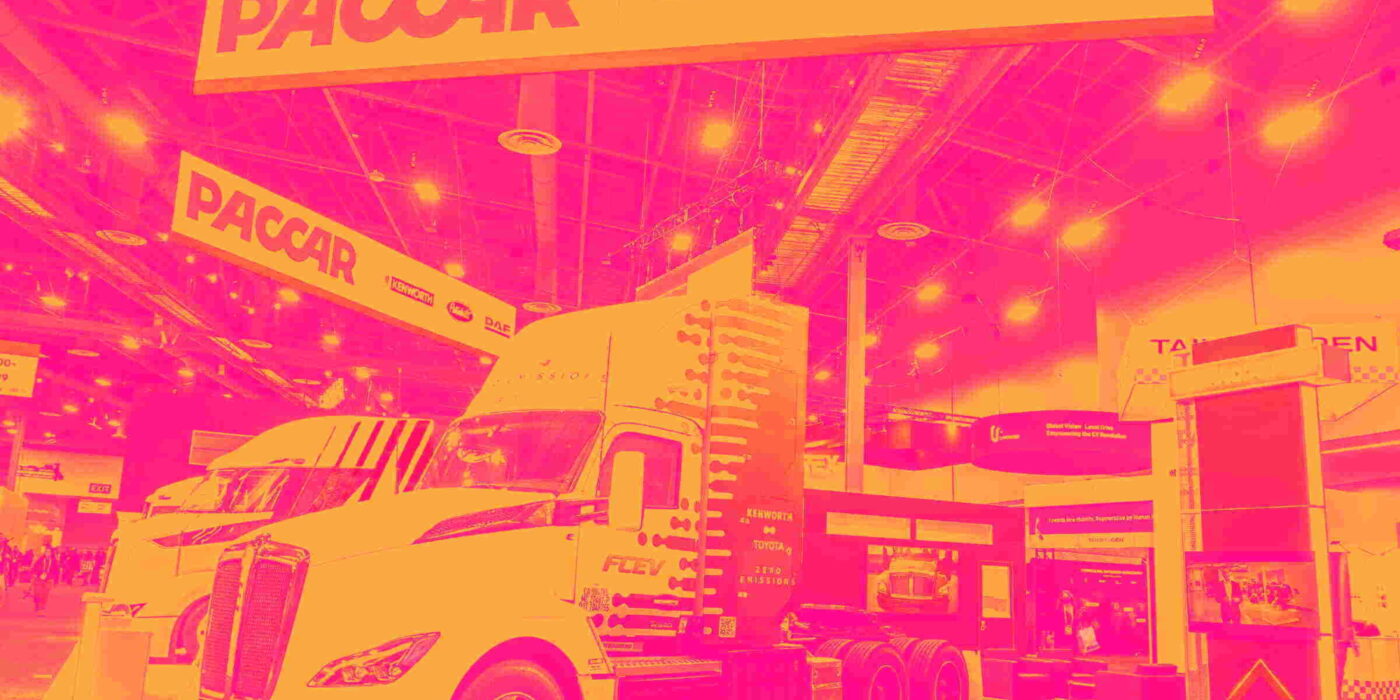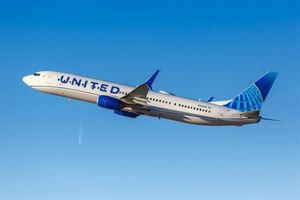
Trucking company PACCAR (NASDAQ: PCAR) reported Q3 CY2025 results topping the market’s revenue expectations, but sales fell by 19% year on year to $6.67 billion. Its GAAP profit of $1.12 per share was 2.7% below analysts’ consensus estimates.
Is now the time to buy PCAR? Find out in our full research report (it’s free for active Edge members).
PACCAR (PCAR) Q3 CY2025 Highlights:
- Revenue: $6.67 billion vs analyst estimates of $6.62 billion (19% year-on-year decline, 0.8% beat)
- EPS (GAAP): $1.12 vs analyst expectations of $1.15 (2.7% miss)
- Adjusted EBITDA: $715.6 million vs analyst estimates of $607.4 million (10.7% margin, 17.8% beat)
- Operating Margin: 7.6%, down from 12.3% in the same quarter last year
- Organic Revenue fell 20.5% year on year vs analyst estimates of 20.7% declines (15.8 basis point beat)
- Market Capitalization: $52.44 billion
StockStory’s Take
PACCAR’s third quarter results were met with a positive market response, despite a year-over-year revenue decline. Management credited ongoing performance in its core truck brands—Peterbilt, Kenworth, and DAF—as well as resilient growth in its PACCAR Parts and Financial Services businesses. CEO Preston Feight highlighted the company’s ability to navigate “dynamic market conditions,” with PACCAR Parts posting record quarterly revenue and healthy margins, and Financial Services delivering double-digit pre-tax income growth. Management pointed to effective cost management and continued investments in distribution and technology as key supports for profitability amid tariff-driven margin pressures.
Looking ahead, PACCAR’s management emphasized that the implementation of Section 232 tariffs will initially pressure margins, but is expected to provide greater clarity and stability for both the company and its customers as the year progresses. Preston Feight stated that the changes would "significantly help PACCAR" and improve its competitive position due to the company’s U.S. manufacturing footprint. Management is also focused on capturing demand from replacement cycles in the truckload sector and sees opportunities for margin recovery as tariff costs moderate and market conditions stabilize.
Key Insights from Management’s Remarks
Management attributed the quarter’s performance and outlook to the impact of tariffs, ongoing investments in technology and capacity, and shifting customer demand across regions and market segments.
- Tariff pressures peaked: Tariffs on steel, aluminum, and imported trucks reached their highest point in October, compressing PACCAR’s truck and parts margins. Management expects Section 232 to gradually reduce these costs starting in November, with full benefits realized by early next year.
- Parts and Financial Services strength: PACCAR Parts achieved record revenue and maintained healthy margins, while Financial Services delivered robust pre-tax income growth. Both segments provided stability and offset some softness in core truck sales.
- Capacity and technology investments: The company continued investing in new parts distribution centers, an engine remanufacturing facility, and next-generation clean diesel and alternative powertrains. Management believes these initiatives will support long-term growth and customer service improvements.
- Order book and market share: PACCAR’s order book for the fourth quarter was reported at 60–70% full across regions, supported by strong demand in vocational and less-than-truckload (LTL) segments. The company’s U.S. market share for Peterbilt and Kenworth stood at 30.3%.
- Customer demand variability: While the vocational and LTL markets remain healthy, the truckload sector continues to face challenges. Management noted that customers are deferring purchases in some segments but sees the potential for a demand rebound as fleets age and regulatory clarity emerges.
Drivers of Future Performance
PACCAR’s outlook is shaped by the phased reduction of tariff-related costs, evolving emissions regulations, and anticipated shifts in customer ordering patterns.
- Tariff cost moderation: The full implementation of Section 232 is expected to gradually reduce tariff expenses through the fourth quarter and into next year, potentially enhancing margins and price competitiveness for PACCAR’s U.S.-built trucks.
- Regulatory and replacement cycle effects: Management anticipates that evolving emissions standards, particularly the potential for a 35 milligram NOx standard, will influence the timing of customer pre-buy activity and replacement demand, especially among truckload carriers who have deferred purchases.
- Investment in product and distribution: Ongoing capital expenditures in new distribution centers, remanufacturing capabilities, and advanced powertrains are intended to support future growth and operational efficiency, even as near-term market visibility remains mixed.
Catalysts in Upcoming Quarters
In the coming quarters, the StockStory team will closely monitor (1) the rate at which Section 232 tariff relief translates into higher margins for PACCAR, (2) signals of renewed demand in the truckload sector as replacement cycles and regulatory deadlines draw near, and (3) the execution and impact of capacity and technology investments on both customer satisfaction and operational efficiency. The interplay between evolving emissions standards and customer purchasing patterns will also be key indicators for PACCAR’s trajectory.
PACCAR currently trades at $98.54, up from $97.43 just before the earnings. Is the company at an inflection point that warrants a buy or sell? See for yourself in our full research report (it’s free for active Edge members).
Our Favorite Stocks Right Now
Trump’s April 2025 tariff bombshell triggered a massive market selloff, but stocks have since staged an impressive recovery, leaving those who panic sold on the sidelines.
Take advantage of the rebound by checking out our Top 9 Market-Beating Stocks. This is a curated list of our High Quality stocks that have generated a market-beating return of 183% over the last five years (as of March 31st 2025).
Stocks that made our list in 2020 include now familiar names such as Nvidia (+1,545% between March 2020 and March 2025) as well as under-the-radar businesses like the once-small-cap company Comfort Systems (+782% five-year return). Find your next big winner with StockStory today.
StockStory is growing and hiring equity analyst and marketing roles. Are you a 0 to 1 builder passionate about the markets and AI? See the open roles here.





